Self-installation of cast iron heating radiators: how to ensure comfort in the house for many years?
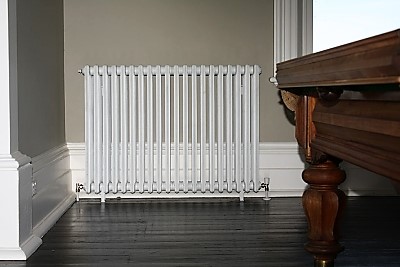
There are many radiators made of different materials on the construction market. Despite the large selection of heating equipment, cast iron batteries will become an excellent option for equipping premises for various purposes.
Cast iron radiators are in phenomenal demand due to their durability, practicality and reliability.
Cast iron batteries are not subject to corrosion and have good heat transfer, which makes them especially popular among homeowners.
Content
Preparatory work
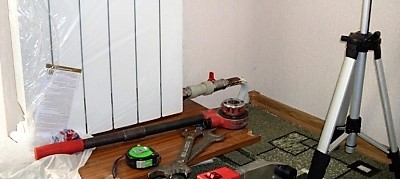
Before you begin the battery installation process, it is important to prepare the necessary tools and connected equipmentDepending on the heating distribution system in the room, parts compatible with it are selected.
Surface, on which cast iron radiators will be mounted, must be cleared And prepared to installation. If the walls are uneven or not perpendicular to the ground, they should be align according to the level. Water from the heating system must be merged before carrying out work with batteries.
Assembling the structure
First of all, the number of sections required to heat a particular room is determined. Sections are calculated individually depending on the area of the room and the size of the windows. Several radiator keys will be needed to group the sections. Parts radiator reliably are attached to a machine or any other device, preventing the sections from turning when the nipple is turned.
Peculiarity! Nipples are needed grease with drying oil and they should be put on pads.
The keys are turned in the opposite direction to the thread movement. in this case the nipples are screwed in 1-2 turns. After the radiator was assembled, it check for leaks, and also carry out hydraulic tests. Usually, for testing they use hydraulic stand and pressure gauge. The radiator should not lose pressure. If this does happen, tighten the nipples and check the sections for defects.
Coloring rules
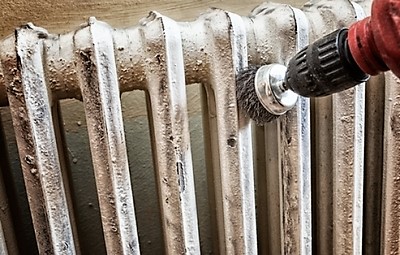
For best battery preservation, you should carry out painting in two stagesAfter painting, it is important to dry the radiators completely.
Correct Drying will prevent the paint from cracking and changing color during operation of the heating system.
The paints used for painting radiators include: a number of demands are put forward:
- Heat resistance up to 80 degrees.
- Harmlessness during operation of the heating system.
- Dye should not be soft.
The most popular compositions for painting batteries are alkyd and acrylic paints. Alkyd enamels are environmentally friendly and inexpensive. Acrylic compounds are the most durable and do not stain.
How to determine the installation location?
The radiators are installed vertically at a distance 3-5 cm from the wall. Distance from cast iron radiator to the floor should be not less than 6 cm, A from the bottom of the window sill to the radiator 5-10 cm for better ventilation and air heating. Pipes heating system may be located at a slight angle in the direction of fluid flow to prevent air from entering the system.
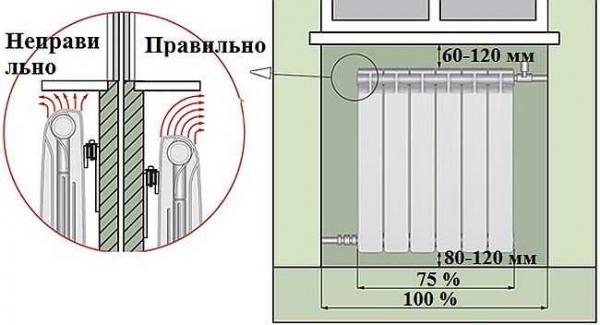
Photo 1. Diagrams of correct and incorrect installation of a radiator: too small a distance from the battery to the window sill reduces heat transfer.
Also important avoid distortions cast iron radiators to ensure the best circulation of the coolant in the battery. The center of the heating devices should coincide with the middle of the window opening with an accuracy of 2 centimeters.
Installing Cast Iron Batteries Yourself
The process of installation of products is quite lightweight and requires few tools and simple construction skills. Due to the weight of the radiator, installation is easier to carry out two or three of usThe longevity of the devices and their efficiency depend on the quality of the heating system installation.
Mounting brackets
To install the brackets you should mark the wall and determine the locations, where they will be located. In reinforced concrete walls, they are drilled holes about 12 centimeters deep, into which they are inserted dowels or special plugs made of wood.
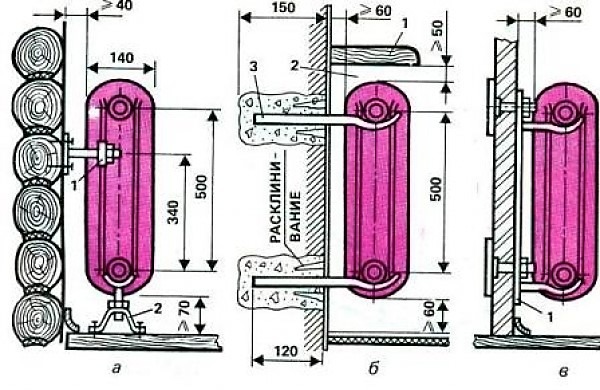
Photo 2. Options for installing a cast iron radiator on brackets: a - against a wooden wall, b - against a brick wall, c - against a lightweight structure.
Once the holes are prepared, the brackets are attached, which fixed with cement mortar or special plugs.
Important! Before hanging a cast iron radiator on brackets, you should check reliability fastenings.
In cases where the walls are not intended for installation of heavy items, the best option would be floor brackets. Fasteners will eliminate any load on the walls.
How to install a heating radiator correctly?
In addition to batteries, the heating system is equipped with components, ensuring ease of maintenance of radiators and preventing the creation of emergency situations. Standard process installation includes the following stages:
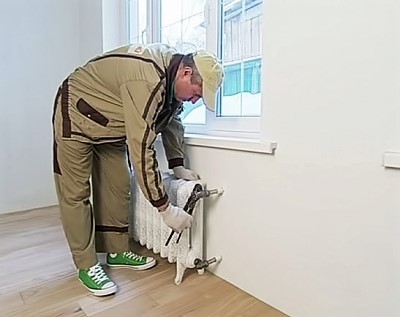
- Installation at the top collector point, where the supply pipe is connected, air vent manual or automatic type.
- Installation of plugs on all free collectors. In the case where the plugs do not match the diameters of the supplied pipes, the solution is to use special adapters, which are usually included with the radiators.
- Installation of control and shut-off valves. Thanks to the ball valves installed at the inlet and outlet of the battery, it is possible to dismantle the radiators without stopping the entire system.
- Connecting equipment to the heating systemCast iron radiators can be connected according to four different schemesThe connection of radiators is determined based on the selected fittings and pipes.
Pressure testing
The final stage installation of radiators is their pressure testing. Usually this manipulation is performed using a special device, but if it is not available, the crimping can be performed independently without any additional tools. Filling batteries water is produced very slowly, thereby preventing water hammer. Careful filling will prevent damage to the fittings and the system as a whole.
Dismantling cast iron radiators
Basic reason Removing the batteries is cleaning equipment or detection of defects, which cannot be eliminated without compromising the integrity of the system.
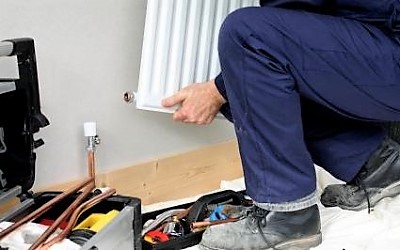
First things first need to disconnect the product from the pipes, which supply the coolant. In order to remove the radiator, it is necessary stop water access into the product by closing the taps or draining the liquid from the entire system.
Dismantling process quite complicated and demands the presence of a large number of tools and assistants. In case one section needs to be replaced, the battery should be disassembled by splitting the nipples. The plugs are most easily pushed out under the influence of elevated temperatures, which can be achieved by using a hair dryer or other heating device.
Useful video
The video shows how to install a cast iron radiator: from marking to connecting pipes.
Decorative design of batteries
Cast iron radiators are durable and reliable products that have stood the test of time. Equipment will fit harmoniously into various stylistic interpretations and will emphasize their restraint and conciseness.
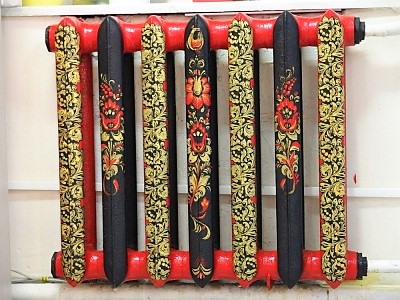
Openwork screens will allow you to hide heating elements and add elegance and sophistication to spaces. The radiators can be painted in different shades, which will highlight the color scheme of the rooms.
Installation of radiators quite a simple task, which requires a little construction skills and a minimum of tools, but the warmth in the building and the durability of the system depend on how the installation is carried out.
Thoughtful assembly will give comfort and a pleasant atmosphere premises. If the installation process raises many questions and there is no confidence in the high quality of the result, then the installation should be entrusted professional workers. Plumbers' services will be somewhat expensive, but the reliability and efficiency of the system will please you for many years.







Comments